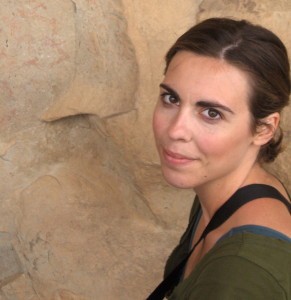 Liliana Davalos Evolutionary functional genomics
Liliana Davalos Evolutionary functional genomics
My current focus is on two main projects. First, I seek to understand the genomic, anatomical, and developmental bases of sensory adaptations in mammals. My study system is a hyperdiverse group of bats that lives mainly in the New World tropics, whose species have independently evolved highly specialized constant-frequency echolocation with Doppler-shft compensation, ultraviolet vision, olfactory receptor (OR) repertoires associated wih frugivory, and different degrees of development of the vomeronasal organs. At my lab, we have uncovered the links between OR gene repertoires and dietary specialization, and have recently discovered that most bat families have independently pseudogenized the ion transport channel that communicates the vomeronasal organ to the brain, thereby losing function of this sensory system. Second, I study the connections between policy, tropical forest loss, and the growth of the illegal crop coca (the raw material for cocaine processing), and their relationship to the habitat for threatened species in the northern Andes. Rapid environmental changes are driving species extinct at a faster rate than at any time since the Cretaceous-Tertiary transition. Since human activities are the main drivers of environmental change, identifying the range of activities with the greatest impact on the largest number of species is critical to planning and implementing conservation, and shaping policies for a biologically sustainable future. I analyze environmental change, its socioeconomic drivers, and species distributions to identify and quantify risks to vulnerable populations
 Walt Eanes Functional Population Genetics
Walt Eanes Functional Population Genetics
I use the Drosophila model to study a number of contemporary questions in evolutionary genetics. In particular I am interested in now natural selection acts on networks as a consequence of their idiosyncratic properties and mostly address this question for metabolism. My studies involve the collection of population level sequence data and experimental genetics using the extensive manipulative tools available for this species. This includes using NGS methods to study clinal variation in genes across a well-studied latitude series of populations in the eastern US from Maine to Florida, as well as collections that are separated by 13 years at the same localities to study both spatial and temporal response patterns. I am interested in using systems-based approach to study how the genes of the central metabolic pathway respond in a coordinated or modular fashion to selection across this cline that we have shown to possess variation in life history traits such as aging, fecundity, and the ability to diapause.
 Brenna Henn Human Population Genetics
Brenna Henn Human Population Genetics
The Henn Lab investigates patterns of human genetic diversity and evolution by pairing genomic datasets with information about phenotype, language and prehistory. The lab is committed to understanding genetic diversity in under-represented populations and testing the hypothesis that the determinants of phenotypic traits and disease in these populations may be influenced by alleles that are population-specific or generally rare. We are broadly interested in refining models of human migration and understanding the adaptive significance of healthy phenotypes such as life history traits, pigmentation and disease resistance. We are particularly focused on the complex demographic history of African populations. In collaboration with African geneticists, we currently work with Khoe-San populations at several field sites in southern Africa to collect DNA samples, ethnographic data and basic phenotypes like skin pigmentation and height. By leveraging reduced environmental variability in these populations, low linkage disequilbrium and historical endogamy, we can jointly address questions regarding the genetic basis for different phenotypes and their evolutionary history. We are affiliated with the Graduate Programs in Ecology and Evolution, Genetics, and Anthropological Sciences at Stony Brook
 Jesse Hollister Genomic and Epigenomic variations in Flowering plants
Jesse Hollister Genomic and Epigenomic variations in Flowering plants
 Joshua Rest Evolution of genomes and gene regulation
Joshua Rest Evolution of genomes and gene regulation
How do organisms survive in a changing world? Joshua Rest’s lab is working to answer this question at the molecular level. The lab uses budding yeast (Saccharomyces cerevisiae) as a model to study why lineages isolated from different environments vary in their ability to use different nutrients. We have found lineages that can utilize many different nutrients (from glucose to glycerol to glucitol), and also lineages that can utilize only a few. We have observed that lineages that utilize more nutrients grow and reproduce faster and are also more robust to the effects of genetic mutations. These differences in metabolic breadth are due primarily to changes in the number of copies of certain genes. The lab is also investigating the consequences of “noisy” protein expression differences among individual cells in a population. “Noisy differences” means that levels of a protein vary among individual cells in a population even when the genotype and environment are identical. Using cells where a particular gene has been tagged with a fluorescent protein, we measure the growth rate of cells with very low or very high levels of expression. We have found that, for many noisy proteins, the cells with extremely high or low levels of expression grow and reproduce much slower than the rest of the population. We are now investigating how cells with different noisy expression levels interact with each other, and the extent that this noise evolves and helps organisms adapt to new environments.
 Bob Thacker Microbiome Evolution
Bob Thacker Microbiome Evolution
 John True Evolutionary Genetics
John True Evolutionary Genetics
John True Lab studies the theoretical and empirical genetics of species differences in morphology and behavior. His empirical work is in the Drosophila model, in which he studies the genetics of pigmentation, mating behavior, and sexual dimorphism. He also conducts research on epistasis, life history evolution, and behavioral evolution using genetic computer simulations.
 Krishna Veeramah Primate population and evolutionary genomics
Krishna Veeramah Primate population and evolutionary genomics
The lab’s primary research interests are within the field of human and non-human primate population and evolutionary genetics. We are primarily an empirical lab that is interested in using both modern and ancient genetic data in model-testing frameworks to elucidate key parameters characterizing the evolution of anatomically modern humans. Disentangling the complex and intertwined roles of demographic history and natural selection in shaping patterns of genetic/genomic variation in humans—as well as the other hominins and non-human primates species from which we are most recently diverged—is a key aspect of this inference process.
